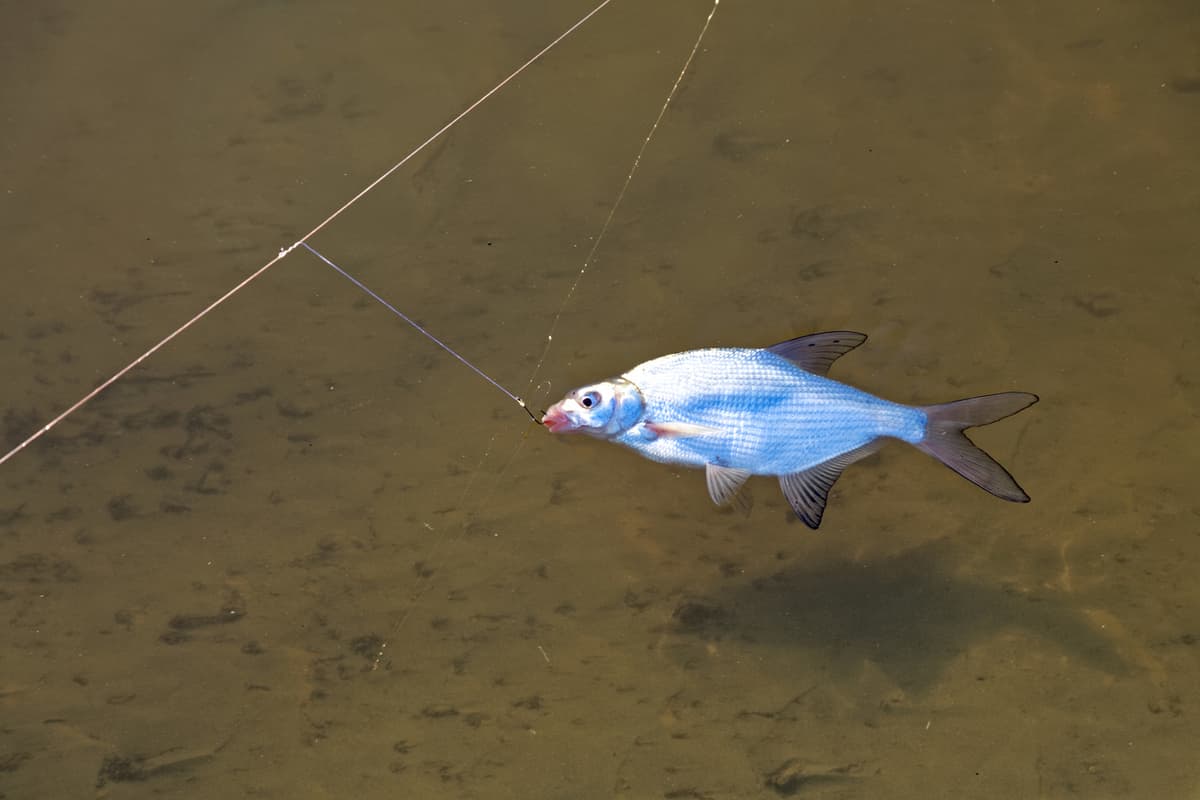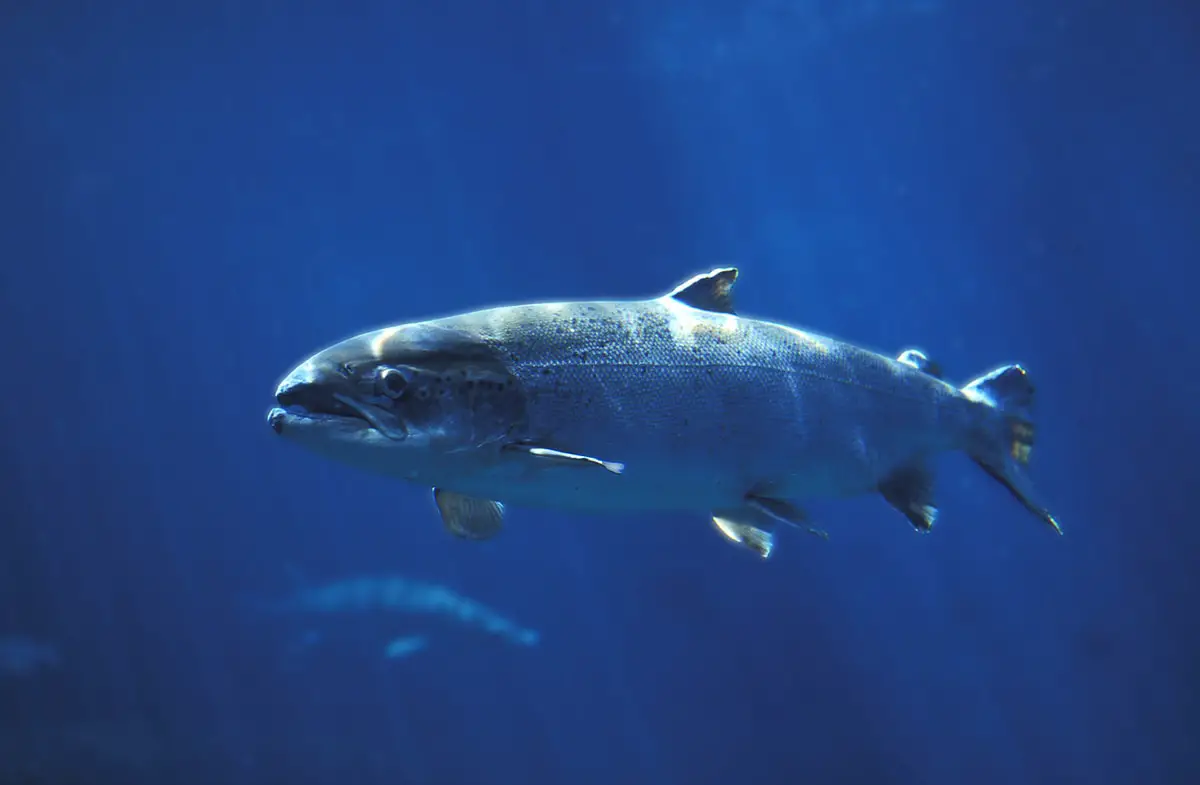I went on an angling trip with some friends recently. One of the topics that popped up during the numerous discussions was whether fish could see your monofilament line underwater. Angling has always been one of my favourite pastime hobbies, so I decided to share my experiences on this topic.
The majority of fish can see your monofilament fishing line at a close distance. Monofilament refracts light which makes the line visible. Factors that influence your monofilament’s visibility are line colour, depth, sunlight, and how good is the targeted fish’s vision is.
Archeologists have discovered the artwork of ancient Egyptians, depicting them angling with reeds, lines, and hooks. Obviously, monolines were not made yet, so they had to improvise. Luckily the Nile river has very murky water, so I don’t think they cared much about fishing lines that fish could not see.
In this post, I will discuss the ability of fish to see monofilament lines underwater.

How Do Fish See Monofilament Lines Under The Water?
Scientific studies have shown that fish see things in colour as well. They definitely see monofilament lines underwater. Why is it still possible for humans to catch them using rods, lines, and hooks loaded with prey if that is the case?
This section will look at light refraction and other factors that contribute to anglers having successful catches with visible monofilament lines.
Light Refraction And The Effect It Has On Fish Seeing A-Line
Light refraction occurs when an object slows down or changes the direction of light rays as it passes through an object. Fishing lines have a refraction index. The number on the refraction index will indicate the line’s visibility in the water.
Monofilament fishing line has a refraction index of between 1.50 and 1.60, making it more visible underwater than, for instance, fluorocarbon, which is between 1.30 and 1.35, but the type of lure and bait also makes a difference.
The amount of light and the angle of light also play a role in the ability of fish to see your monofilament line underwater.
Sometimes the fish will like the smell of your bait and still taste even though they see a line. Here is some scientific data that I found that was done on refraction of monofilament underwater:

Deep Water Affecting Visibility Of Monofilament Line
Light dissipates the deep it goes in the water column. This changes the colour and visibility of the monofilament line underwater.
Fish obviously do not have secret light switches or waterproof solar torches that they swim around with, so it would make sense why they are nearsighted.
Research shows that the deeper the water gets, the darker things become. The monofilament line will become more difficult to spot because of reduced light.
Monofilament Line Come In Different Colors
We now know that fish can see monofilament fishing lines underwater, so how do we make them less visible to fish.
I found an article with a list of colours for monofilament fishing lines. It has helped me to hide my line in the water with great success.
I have found out through this resource that it is possible to use different colour lines to your advantage in the water and thus decrease the line’s visibility.
I will list a few of those colours and tell you what conditions they will be better suited.
Clear Monofilament Fishing Line
A clear monofilament fishing line is suitable for clean and clear water sources. Fish adapt to their surroundings, so the less visible your fishing line is, the more your success rate will be landing a catch.
As I mentioned earlier, other lines are less visible to fish underwater, but a clear monofilament fishing line is an excellent all-around option for angling.
Blue Monofilament Fishing Line
A blue monofilament is an excellent option for offshore fishing lines. It blends in well with the colour of the ocean water, but the line is still visible to the angler. Oceans are deep, so light decreases making the line less visible to fish. Bright coloured lures work well in this setting with the blue monofilament fishing line.
Green Monofilament Fishing Line
Many water sources that I visit for angling have a green colour to them. I prefer to use green monofilament fishing lines in these waters. Other colour lines might stand out too much and be more visible to fish.
Angling is an art on its own, and it takes some time to master all the tricks. Even experienced anglers need some luck somedays, but it helps to have a few green lines tricks up your sleeve.
Remember, rather use a clear line if the green stands out too much.
Yellow Monofilament Fishing Line
Anglers like me use yellow monofilament fishing lines in filthy and murky water. It makes it easier for the angler to see their lines. If the water is too clear, it may make it easy for fish to see your line.
I have found that there is a colour of line for every situation. Still, I have to say that the yellow monofilament line is my least favourite because it is highly visible, but I also have to add that I do not fish in filthy waters that often.
Red Monofilament Fishing Line
There is a lot of speculation about red monofilament fishing lines and how visible it is to fish underwater.
From my experience with the red line, I can tell you that it sticks out above the water. The red line makes it easy to track the location in the water, and you can see movement on the line with ease.
I have heard from divers that the deeper red monofilament line gets in the water, the darker it becomes. I suppose in great depths, it could have certain advantages.
Anglers seem to succeed in catching fish with all colours of monofilament lines; the trick is to make your line as invisible as possible by making sure it blends in as much as possible with the water conditions.
In the next section, we will look at other ways fish can find their food besides their eyesight.
The Other Senses Of Fish To Find Food Or Sense Fishing Lines
It may sound fishy at first, but fish do not only rely on eyesight only to find their prey. If this were the case, then their eyesight would be so great that they would spot even an invisible monofilament line.
This section will tell you about the other extraordinary senses fish have that make angling fun.
How Well Do Fish Smell?
Fish do not use their nostrils for breathing as humans do; they only use them to smell.
Fish can smell much better than us, and they use their sense of smell to find their way around vast masses of water.
We, as anglers, can be glad that the monofilament line does not have a smell; otherwise, fish would be able to see our lines and smell them from miles away.
So l always make sure that I use baits that smell good and are appetizing to fish so that even if they spot my monofilament line, they still want to taste what is on the hook.
How Well Do Fish Hear?
Fish rely on hearing to escape from predators even though they do not have visible ears.
Sensorial organs located beneath the fish’s skin can give them the ability to sense vibrations in the water to let them know what is happening around them. They are even able to sense vibrations from above the water.
Water is a great conductor of sound waves.
Together with a lateral line, these sensory organs allow fish not only to hear but also to pick up even more vibrations; for this reason, bass anglers use trolling techniques to lure the fish.
When using a monofilament line for this purpose, the fish becomes more interested in the lure than the colour of the line in itself. Because the line is in motion, it becomes harder for the fish to see the line.
How Well Do Fish Taste?
Did you know that fish have tongues!
They taste much the same way as humans do.
Their taste buds can aid them with finding food. So with their heightened sense of smell combined with their taste buds, they are always swimming around seeking something to eat.

The Lateral Line Of A Fish
Fish have a lateral line that runs on the side of the body of a fish.
It runs from the head to the tail. These lateral lines contain small hair that picks up vibrations even before a fish can see what is causing the vibrations.
Some fish are attracted by the vibrations sent out by certain lures and don’t even care about the visibility of your monofilament line.
